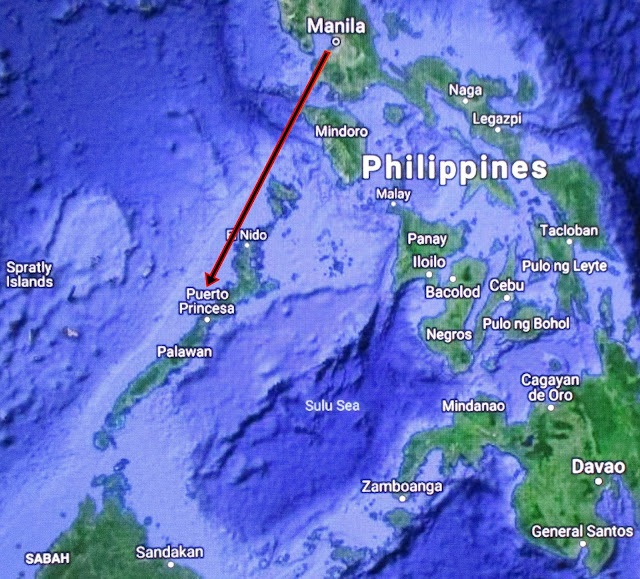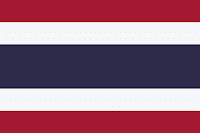* * * * *
Puerto Princesa, Palawan Island, Republic of the
Philippines
Monday 2nd December 1996
Palawan Island lies to the southwest of Manila and is bounded by the South China Sea to the west and the Sulu Sea to the east. It’s a long, skinny island being 280 miles in length and 31 miles at its widest point, possessing 1,200 miles of irregular coastline lined with rocky coves and sugar-white sandy beaches. It also harbors a vast stretch of virgin forests that carpet its chain of mountain ranges running down its spine; averaging in height at 3,500 feet to 6,843 feet above sea level. In addition it’s surrounded by 1,780, mostly uninhabited, islands and islets.
National Geographic has this observation: “Palawan is the best island destination in the East and Southeast Asia region, having incredibly beautiful natural seascapes and landscapes, plus one of the
most bio-diverse (terrestrial and marine)
islands in the Philippines.”
I totally
agree. From Manila it took the 737 fifty
minutes to fly the 275 NM (316.2 SM), on a southwesterly course using airways
A-590 and W-2 at 31,000 feet, to Puerto Princesa. The appearance of Palawan Island far below,
and its surrounding islets, were indeed breathtakingly beautiful.
After Ferdinand Magellan's death,
remnants of his fleet landed on Palawan, where the bounty of the island saved
them from starvation, allowing them to repair and build strength in order to
continue their circumnavigation of the world.
Much later Spanish Colonizers founded a
settlement on 4th March 1872, and, by May 1872 its port evolved as
the center of Spanish Naval Operations in the area. Originally the port was named after Queen
Isabella II’s daughter, but after the daughter’s untimely death, the Spanish Queen
changed the port’s name to Puerto
de la Princesa.
Hence today it’s simply called “Puerto Princesa.”
By 1902, after the Philippine-American War, the Americans established civil rule
in northern Palawan, kicking the Spanish out.
With the advent of World War II, the Japanese in
turn kicked the Americans out, setting the stage for a dark page in Palawan’s
history. At the termination of the
Japanese occupation, in order to prevent the rescue of prisoners of war by the advancing allies, on 14th
December 1944, units of the Japanese Fourteenth Area Army herded the remaining 150 POWs at Puerto Princesa into three covered trenches,
which were then set on fire using barrels of gasoline. Prisoners who tried to escape the flames were
shot down; others attempting to escape, by climbing over a cliff that ran along
one side of the trenches, were in time hunted down and killed. Only 11 men escaped the slaughter and between
133 and 141 were killed. This “Palawan Massacre”
can be observed in the opening scenes of the 2005 Miramax film, The Great Raid.
These are the actual U.S. Army Rangers with Filipino guerrillas that rescued 513 POWs at Cabanatuan, on 30 Jan., 1945. It was one of the most successful rescue missions in U.S. military history.
In contrast to this historically dark period, picturesque Puerto
Princesa was on the midsection of Palawan Island’s east coast, with its own perfect bay,
and is the least densely populated city in the Philippines. It’s a popular tourist city, with many beach
resorts, which the press has labeled: “The cleanest and greenest city in the
Philippines.”
As for the Puerto Princesa Airport, it was originally built by the
Japanese, during the occupation, using crushed coral and POW slave labor. After the Palawan liberation in 1945, several
USAAF units were stationed there until 1946. Ultimately it was rehabilitated and opened as
a domestic airport in the late 1970s; today it shares the airfield with the Antonio Bautista Air Base. Its
single runway is on the east edge of the city, ending on the Sulu Sea’s Beach, and
runs east to west (090°/270° magnetic) with a length of 9,711 feet. For instrument approaches it has a basic VOR
serving both ends of the runway.



















Comments
Post a Comment